Themed collection Recent Review Articles

Rare earth element based single-atom catalysts: synthesis, characterization and applications in photo/electro-catalytic reactions
The synthesis, characterization, and applications of rare earth-based single-atom catalysts.

Nanoscale Horiz., 2022,7, 31-40
https://doi.org/10.1039/D1NH00459J
Bio-memristors based on silk fibroin
Silk fibroin-based bio-memristors with diversified functions and outstanding performance constitute candidates for next-generation non-volatile storage, bionic synapses, and bio-integrated systems.

Mater. Horiz., 2021,8, 3281-3294
https://doi.org/10.1039/D1MH01433A
Gels as emerging anti-icing materials: a mini review
This review summarizes the emerging anti-icing gels and corresponding anti-icing mechanisms, and provides a future perspective.

Mater. Horiz., 2021,8, 3266-3280
https://doi.org/10.1039/D1MH00910A
Nanoprobe-mediated precise imaging and therapy of glioma
After rational component regulation and surface modification, functional nanoprobes could efficiently cross the blood–brain barrier and target gliomas to realize precise imaging, drug delivery or therapy for gliomas.

Nanoscale Horiz., 2021,6, 634-650
https://doi.org/10.1039/D1NH00182E
Bioinspired double network hydrogels: from covalent double network hydrogels via hybrid double network hydrogels to physical double network hydrogels
This minireview discusses the advantages and challenges in constructing bioinspired double-network hydrogels mimicking the structure and/or properties of biological tissue.
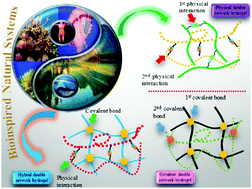
Mater. Horiz., 2021,8, 1173-1188
https://doi.org/10.1039/D0MH01514H
Radiative heat transfer at the nanoscale: experimental trends and challenges
Beyond the usual surface-to-surface Planck's law of thermal radiation, nanoscale radiative heat transfer is experiencing a revolution.
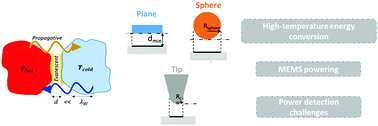
Nanoscale Horiz., 2021,6, 201-208
https://doi.org/10.1039/D0NH00609B
Advanced technologies for the fabrication of MOF thin films
In this Minireview, we discuss several appealing approaches that have been developed in the last few years for the fabrication of MOF thin films, highlighting their assets and the challenges still faced.
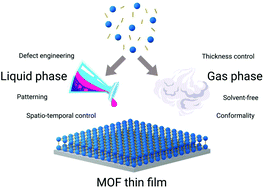
Mater. Horiz., 2021,8, 168-178
https://doi.org/10.1039/D0MH00898B
Toward printable solar cells based on PbX colloidal quantum dot inks
This review summarizes the advances in solar cells based on PbX CQD inks, including both lab-scale and large-area photovoltaic devices.
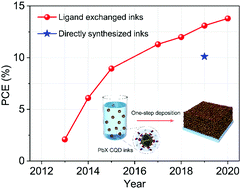
Nanoscale Horiz., 2021,6, 8-23
https://doi.org/10.1039/D0NH00488J
Structural complexity in Prussian blue analogues
We survey the most important kinds of structural complexity in Prussian blue analogues and their implications for materials function. In particular, we explore the challenges for K2Mn[Fe(CN)6], the leading cathode material for K-ion batteries.

Mater. Horiz., 2021,8, 3178-3186
https://doi.org/10.1039/D1MH01124C
Atomic vibration as an indicator of the propensity for configurational rearrangements in metallic glasses
Vibrational parameters fare better in correlating with local properties than purely static structural parameters.

Mater. Horiz., 2021,8, 2359-2372
https://doi.org/10.1039/D1MH00491C
Impact of nanomaterials on the intestinal mucosal barrier and its application in treating intestinal diseases
The intestinal mucosal barrier could maintain intestinal homeostasis and resist diseases. We review the effect of nanomaterials on the intestinal mucosal barrier and the potential application of nanomaterials in the intestines.

Nanoscale Horiz., 2022,7, 6-30
https://doi.org/10.1039/D1NH00315A
Functional nanomaterials, synergisms, and biomimicry for environmentally benign marine antifouling technology
This review outlines recent progress and strategies for highly efficient, environmentally-friendly marine antifouling technology based on nanomaterials and nanocomposites, as well as synergistic and biomimetic approaches.

Mater. Horiz., 2021,8, 3201-3238
https://doi.org/10.1039/D1MH01103K
Chemically modified carbon nanostructures and 2D nanomaterials for fabrics performing under operational tension and extreme environmental conditions
Textile fabric fibers meet functionalized carbon nanostructures and 2D nanomaterials, enabling the fabrication of novel fabrics with advanced qualities against operational limitations and extreme environmental conditions.

Mater. Horiz., 2021,8, 3187-3200
https://doi.org/10.1039/D1MH01077H
Emerging iongel materials towards applications in energy and bioelectronics
This review presents an integrated perspective on the recent progress and advances of emerging iongel materials and their applications in the areas of energy, gas separation and (bio)electronics.

Mater. Horiz., 2021,8, 3239-3265
https://doi.org/10.1039/D1MH01263K
ABO3 multiferroic perovskite materials for memristive memory and neuromorphic computing
This article systemically reviews ABO3 multiferroic perovskite materials and their applications in memristive memory and neuromorphic computing.

Nanoscale Horiz., 2021,6, 939-970
https://doi.org/10.1039/D1NH00292A
Non-flammable liquid electrolytes for safe batteries
This review summarizes eight different strategies to formulate non-flammable liquid electrolytes to improve safety of alkali-metal-ion batteries such as lithium-ion, sodium-ion and potassium-ion batteries.

Mater. Horiz., 2021,8, 2913-2928
https://doi.org/10.1039/D1MH00748C
Beyond homogeneous dispersion: oriented conductive fillers for high κ nanocomposites
This review summarizes strategies for achieving high thermal conductivities of polymer composites by tailoring orientation of fillers that is hardly achieved in conventional particulate-filled composites for emerging thermal management applications.

Mater. Horiz., 2021,8, 3009-3042
https://doi.org/10.1039/D1MH00907A
Progress on photocatalytic semiconductor hybrids for bacterial inactivation
Various semiconductor photocatalyst systems for photo-induced bacterial inactivation.

Mater. Horiz., 2021,8, 2964-3008
https://doi.org/10.1039/D1MH00773D
Metal-based electrocatalysts for room-temperature Na–S batteries
Room-temperature Na–S batteries have captured research attention from the community as promising next-generation energy storage devices as they integrate the advantages of high abundance and low cost of elemental Na/S with high theoretical capacity and energy density.

Mater. Horiz., 2021,8, 2870-2885
https://doi.org/10.1039/D1MH01326B
Two-dimensional Ti3C2 MXene-based nanostructures for emerging optoelectronic applications
This review focuses on the recent research efforts devoted to Ti3C2 MXene nanostructures with respect to their synthesis methods, fundamental properties, theoretical description and optoelectronic applications.

Mater. Horiz., 2021,8, 2929-2963
https://doi.org/10.1039/D1MH00986A
Ti3C2Tx MXene: from dispersions to multifunctional architectures for diverse applications
This review article critically evaluates the diverse strategies used in processing MXene into functional architectures, with an assessment of how processing variables influence properties and relevant device performance metrics.

Mater. Horiz., 2021,8, 2886-2912
https://doi.org/10.1039/D1MH00968K
Synthesis of 2D Ti3C2Tx MXene and MXene-based composites for flexible strain and pressure sensors
Typical synthesis methods toward two-dimensional (2D) Ti3C2Tx MXene and its application in flexible high-performance strain and pressure sensors.

Nanoscale Horiz., 2021,6, 893-906
https://doi.org/10.1039/D1NH00317H
Bonding, structure, and mechanical stability of 2D materials: the predictive power of the periodic table
Inverse dependence of 2D covalent bonding on bond length of elemental and isoelectronic binary monolayers of the main group elements II–VI. This behavior is also observed for the Young's modulus and ultimate strength.

Nanoscale Horiz., 2021,6, 856-892
https://doi.org/10.1039/D1NH00113B
A nano perspective behind the COVID-19 pandemic
Nano-scale interactions are key to understand the SARS-CoV-2 infectious potential and bio–nano sciences can provide hints on viral particles behaviour.

Nanoscale Horiz., 2021,6, 842-855
https://doi.org/10.1039/D1NH00135C
Harnessing selectivity in chemical sensing via supramolecular interactions: from functionalization of nanomaterials to device applications
We review the design and fabrication of selective chemical sensors based on low-dimensional materials functionalized with (supra)molecular receptors, from the choice of the analyte of interest to its final device integration.

Mater. Horiz., 2021,8, 2685-2708
https://doi.org/10.1039/D1MH01117K
Anisotropic conductive networks for multidimensional sensing
We review the present state and advances of the design and preparation strategies for fabricating multidimensional sensors based on anisotropic conducting networks.

Mater. Horiz., 2021,8, 2615-2653
https://doi.org/10.1039/D1MH00615K
Magnetic materials: a journey from finding north to an exciting printed future
This review summarizes the main concepts, technologies and recent reports that allow interconnecting printing technologies with magnetoactive materials.

Mater. Horiz., 2021,8, 2654-2684
https://doi.org/10.1039/D1MH00641J
Heparanized chitosans: towards the third generation of chitinous biomaterials
Sulfation of chitosan makes this polymer a closer mimic of heparins and heparan sulfates, giving rise to the so called heparanized chitosan, that exert their biological activities through their capacity to interact with a range of biological targets.

Mater. Horiz., 2021,8, 2596-2614
https://doi.org/10.1039/D1MH00728A
Lanthanide upconversion and downshifting luminescence for biomolecules detection
In this review article, we focus on recent advances in the detection of biomolecule activities based on lanthanide luminescent systems, including UCNPs, Ln-MOFs, and lanthanide organic complexes.

Nanoscale Horiz., 2021,6, 766-780
https://doi.org/10.1039/D1NH00299F
Metal–organic frameworks for chemical sensing devices
An emerging trend in the application of metal–organic frameworks is to engineer mobile devices to possess chemical detecting capabilities for environmental monitoring, point-of-care testing, artificial intelligence, food security and defence.

Mater. Horiz., 2021,8, 2387-2419
https://doi.org/10.1039/D1MH00609F
Designing electrode materials for the electrochemical reduction of carbon dioxide
A review discussing materials and mechanism for the electrochemical reduction of carbon dioxide.

Mater. Horiz., 2021,8, 2420-2443
https://doi.org/10.1039/D1MH00675D
Emerging polymer electrodes for aqueous energy storage
The state-of-the-art research development of emerging polymer electrode materials for aqueous batteries is overviewed. Guidance is provided on structural design and energy storage performance.

Mater. Horiz., 2021,8, 2373-2386
https://doi.org/10.1039/D1MH00672J
Iron oxide nanoparticles for immune cell labeling and cancer immunotherapy
Iron oxide nanoparticles (IONP) can be used for MRI-mediated immune cell tracking for improved cancer diagnosis and therapy. IONPs are also used in immunotherapeutic approaches such as cancer vaccines and hyperthermic therapy.

Nanoscale Horiz., 2021,6, 696-717
https://doi.org/10.1039/D1NH00179E
Luminescent copper indium sulfide (CIS) quantum dots for bioimaging applications
This review covers the main applications of copper indium sulfide quantum dots for bioimaging applications.

Nanoscale Horiz., 2021,6, 676-695
https://doi.org/10.1039/D1NH00260K
Advances in ultrasensitive piezoresistive sensors: from conventional to flexible and stretchable applications
This paper comprehensively reviews methods and approaches to enhance the piezoresistive effect, ranging from the quantum physical effect and new materials to nanoscopic and macroscopic structures, and from conventional rigid to soft electronic applications.

Mater. Horiz., 2021,8, 2123-2150
https://doi.org/10.1039/D1MH00538C
Toward autonomous design and synthesis of novel inorganic materials
We review recent progress in the development of self-driving laboratories and discuss their application to autonomous inorganic materials synthesis.

Mater. Horiz., 2021,8, 2169-2198
https://doi.org/10.1039/D1MH00495F
Electronic band structure of iridates
Crystal structure without distortion for orthorhombic SrIrO3 (left) and the room temperature in-plane band structure of SrIrO3(001) thin film (right). Here, the green, orange, and blue circles represent Sr, Ir, and O, respectively.

Mater. Horiz., 2021,8, 2151-2168
https://doi.org/10.1039/D1MH00063B
A current overview of the oxidative desulfurization of fuels utilizing heat and solar light: from materials design to catalysis for clean energy
The design strategy and synthesis approach impact the physico-chemical properties, catalytic performances and reaction pathways of ODS catalysts.

Nanoscale Horiz., 2021,6, 588-633
https://doi.org/10.1039/D1NH00127B
Well-rounded devices: the fabrication of electronics on curved surfaces – a review
New innovations in the fabrication of curved surface electronics open up exciting possibilities in human–computer interaction, sensing, and other applications.

Mater. Horiz., 2021,8, 1926-1958
https://doi.org/10.1039/D1MH00143D
SnSe, the rising star thermoelectric material: a new paradigm in atomic blocks, building intriguing physical properties
Thermoelectric materials, which enable direct energy conversion between waste heat and electricity, are witnessing exciting developments due to innovative breakthroughs both in materials and the synergistic optimization of structures and properties.
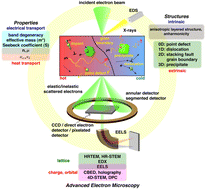
Mater. Horiz., 2021,8, 1847-1865
https://doi.org/10.1039/D1MH00091H
Trust is good, control is better: a review on monitoring and characterization techniques for flow battery electrolytes
This review article summarizes the state-of-the-art techniques for the characterization and monitoring of flow battery electrolytes highlighting in particular the importance of the electrolyte state-of-charge and state-of-health assessment.
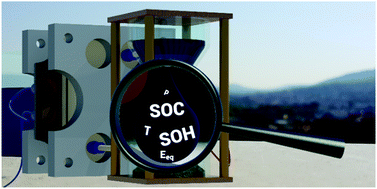
Mater. Horiz., 2021,8, 1866-1925
https://doi.org/10.1039/D0MH01632B
Chitin and chitosan on the nanoscale
Nanochitin and nanochitosan are nanowhiskers combining the structural strength of nanocellulose with the versatile chemistry of chitin/chitosan. We review their fabrication, properties and uses, with a focus on recent progress.

Nanoscale Horiz., 2021,6, 505-542
https://doi.org/10.1039/D0NH00696C
Electrocatalysis of gold-based nanoparticles and nanoclusters
Gold-based nanomaterials can be used in various electrocatalytic reactions. The rational tuning of their composition, architecture, and particle size can achieve enhanced electrocatalytic activity.
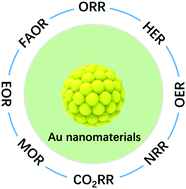
Mater. Horiz., 2021,8, 1657-1682
https://doi.org/10.1039/D0MH01947J
Recent advances in printed flexible heaters for portable and wearable thermal management
This review presents the recent progress of printed flexible heaters for portable and wearable thermal management.

Mater. Horiz., 2021,8, 1634-1656
https://doi.org/10.1039/D0MH01950J
Polydopamine antibacterial materials
This review focuses on the recent progress in polydopamine antibacterial materials, including their structural and functional features, preparation strategies, antibacterial mechanisms, and their biomedical applications.
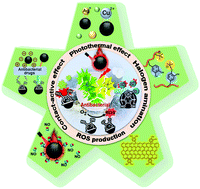
Mater. Horiz., 2021,8, 1618-1633
https://doi.org/10.1039/D0MH01985B
Energy-efficient transistors: suppressing the subthreshold swing below the physical limit
We review the physics, design, and optimization of four steep-slope transistors and demonstrate their potential and drawbacks.
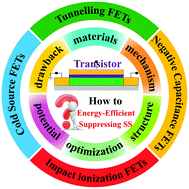
Mater. Horiz., 2021,8, 1601-1617
https://doi.org/10.1039/D0MH02029J
Toward the creation of high-performance heterogeneous catalysts by controlled ligand desorption from atomically precise metal nanoclusters
This review describes state-of-art techniques and knowledge on the creation of high-performance heterogeneous catalysts using atomically precise metal nanoclusters.
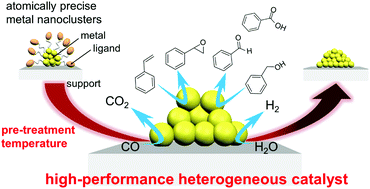
Nanoscale Horiz., 2021,6, 409-448
https://doi.org/10.1039/D1NH00046B
Liquid–liquid interfaces: a unique and advantageous environment to prepare and process thin films of complex materials
This review summarizes the recent progress in a novel route to both synthesize and process complex and multi-component materials as thin films, based on interfaces between immiscible liquids, highlighting different materials and applications.
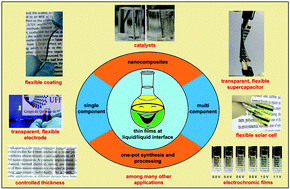
Mater. Horiz., 2021,8, 1409-1432
https://doi.org/10.1039/D0MH01676D
Nanopores in two-dimensional materials: accurate fabrication
This comprehensive and critical review covers the recent important progress of the fabrication of nanopores in two-dimensional materials.
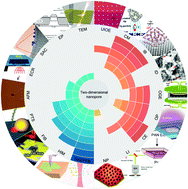
Mater. Horiz., 2021,8, 1390-1408
https://doi.org/10.1039/D0MH01412E
Recent advances toward environment-friendly photodetectors based on lead-free metal halide perovskites and perovskite derivatives
We present a review of the recent advances in environment-friendly photodetectors based on lead-free metal halide perovskites and perovskite derivatives.
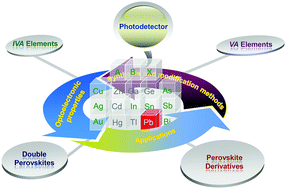
Mater. Horiz., 2021,8, 1367-1389
https://doi.org/10.1039/D0MH01567A
Biomaterial-mediated internal radioisotope therapy
Radiation therapy (RT), including external beam radiotherapy (EBRT) and internal radioisotope therapy (RIT), has been an indispensable strategy for cancer therapy in clinical practice in recent years.
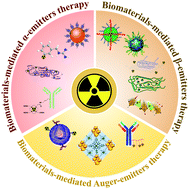
Mater. Horiz., 2021,8, 1348-1366
https://doi.org/10.1039/D0MH01761B
Catalytic methods for chemical recycling or upcycling of commercial polymers
A review covering catalytic method development to enable efficient chemical recycling and upcycling of the most abundant commercial polymers.

Mater. Horiz., 2021,8, 1084-1129
https://doi.org/10.1039/D0MH01286F
Artificial intelligence and machine learning in design of mechanical materials
This review revisits the state of the art of research efforts on the design of mechanical materials using machine learning.

Mater. Horiz., 2021,8, 1153-1172
https://doi.org/10.1039/D0MH01451F
Niobium pentoxide based materials for high rate rechargeable electrochemical energy storage
This review summarizes the crystalline features, electrochemical characteristics, ions intercalation charge storage mechanisms, and recent advances in niobium pentoxide related materials for high-rate electrochemical energy storage.
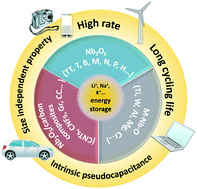
Mater. Horiz., 2021,8, 1130-1152
https://doi.org/10.1039/D0MH01481H
Rare-earth quantum cutting in metal halide perovskites – a review
Ytterbium-doped lead halide perovskite (Yb3+:CsPbX3 with x = Cl or Cl/Br) nanocrystals and thin films have shown surprisingly efficient downconversion by quantum cutting with PLQYs up to 193%.
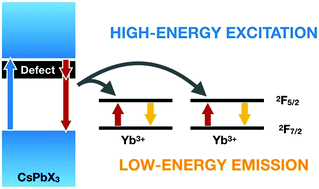
Mater. Horiz., 2021,8, 1072-1083
https://doi.org/10.1039/D0MH01470B
Boolean logic gate based on DNA strand displacement for biosensing: current and emerging strategies
The integration of various materials and technologies enables the intelligent SDLG biosensor to detect the different types of targets with high sensitivity and generate diversified output signals.

Nanoscale Horiz., 2021,6, 298-310
https://doi.org/10.1039/D0NH00587H
Recent progress in field-assisted additive manufacturing: materials, methodologies, and applications
Recent developments and major advances in field-assisted additive manufacturing technologies from aspects of materials, methodologies, and applications.
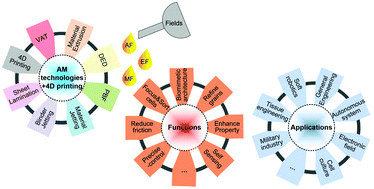
Mater. Horiz., 2021,8, 885-911
https://doi.org/10.1039/D0MH01322F
Nitroxide radical polymers for emerging plastic energy storage and organic electronics: fundamentals, materials, and applications
We review the electrochemical theory, material design, and device fabrication for nitroxide radical polymers in emerging plastic energy storage and organic electronics.
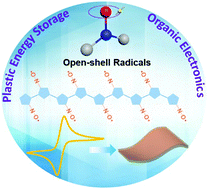
Mater. Horiz., 2021,8, 803-829
https://doi.org/10.1039/D0MH01391A
Review on the growth, properties and applications of self-assembled oxide–metal vertically aligned nanocomposite thin films—current and future perspectives
This review summarizes the recent progress in self-assembled oxide-metal nanocomposites, their design criteria using the in-plane strain compensation model, functionalities, and the coupling between electrical, magnetic and optical properties
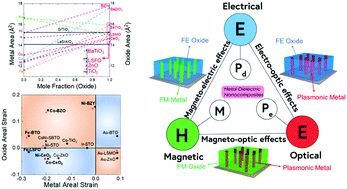
Mater. Horiz., 2021,8, 869-884
https://doi.org/10.1039/D0MH01111H
Magnetic skyrmions for unconventional computing
A rich variety of unconventional computing paradigms has been raised with the rapid development of nanoscale devices. Magnetic skyrmions, spin swirling quasiparticles, have been endowed with great expectations for unconventional computing.
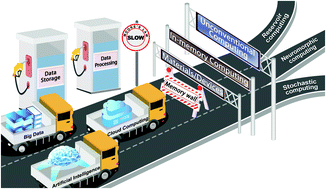
Mater. Horiz., 2021,8, 854-868
https://doi.org/10.1039/D0MH01603A
Porous flexible frameworks: origins of flexibility and applications
All major classes of porous crystalline frameworks including zeolites, metal–organic frameworks, covalent organic frameworks and hydrogen-bonded organic frameworks exhibit structural flexibilities.
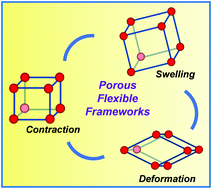
Mater. Horiz., 2021,8, 700-727
https://doi.org/10.1039/D0MH01710H
Revisiting staining of biological samples for electron microscopy: perspectives for recent research
This review revisits staining protocols for electron microscopy focussing on the visualization of active sites, i.e. enzymes, metabolites or proteins, in cells and tissues, which were never established as standard protocols in electron microscopy.

Mater. Horiz., 2021,8, 685-699
https://doi.org/10.1039/D0MH01579B
Highly selective gas sensing enabled by filters
Sorption, size-selective & catalytic film or particle-bed filters dramatically enhance gas sensor selectivity. We critically review 300+ articles and tutorially give guidelines for systematic filter design in air quality, health & food applications.
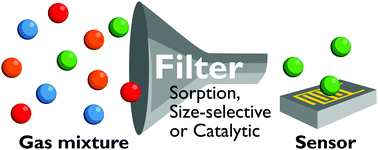
Mater. Horiz., 2021,8, 661-684
https://doi.org/10.1039/D0MH01453B
Material design strategies to improve the performance of rechargeable magnesium–sulfur batteries
This review encompasses the underlying working principles behind the most critical approaches to solve challenging issues in Mg–S batteries.
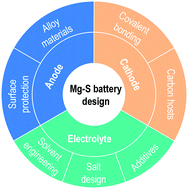
Mater. Horiz., 2021,8, 830-853
https://doi.org/10.1039/D0MH01403F
Engineered two-dimensional nanomaterials: an emerging paradigm for water purification and monitoring
This review aims to comprehensively summarize the significant developments in design strategies, processing approaches, and application-oriented techniques of 2D nanomaterials for water purification and monitoring.

Mater. Horiz., 2021,8, 758-802
https://doi.org/10.1039/D0MH01358G
Light-driven bimorph soft actuators: design, fabrication, and properties
This review provides an account of the state-of-the-art light-driven bimorph soft actuators from their fundamentals to emerging applications, as well as new perspectives on the future scope, opportunities, and challenges.
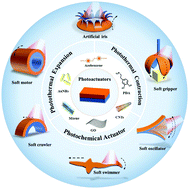
Mater. Horiz., 2021,8, 728-757
https://doi.org/10.1039/D0MH01406K
Porous bioactive glass micro- and nanospheres with controlled morphology: developments, properties and emerging biomedical applications
Porous bioactive glass micro- and nanospheres are attractive biomaterials for biomedical applications: bone regeneration, wound healing, drug delivery and theranostics.
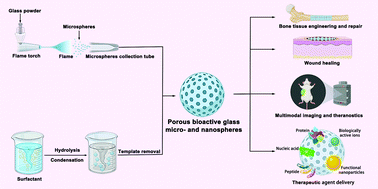
Mater. Horiz., 2021,8, 300-335
https://doi.org/10.1039/D0MH01498B
Recent advances in dioxaborine-based fluorescent materials for bioimaging applications
Dioxaborine-based materials, including molecules and nanoparticles, possess various interesting photophysical properties allowing advanced bioimaging from cells to in vivo.
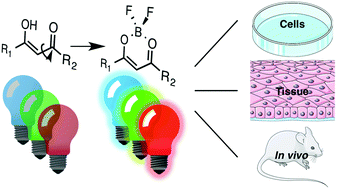
Mater. Horiz., 2021,8, 501-514
https://doi.org/10.1039/D0MH01186J
Solution-processed electronics for artificial synapses
Solution-processed artificial synapses are expected to develop the synaptic electronics towards flexible and highly integrated three-dimensional neural networks to break through the von Neumann computing architecture in the post-Moore era.

Mater. Horiz., 2021,8, 447-470
https://doi.org/10.1039/D0MH01520B
Nanozyme's catching up: activity, specificity, reaction conditions and reaction types
The gaps and catching up strategies between nanozymes and enzymes in terms of their activity, specificity, physiological reaction conditions and biologically relevant reactions are critically reviewed.

Mater. Horiz., 2021,8, 336-350
https://doi.org/10.1039/D0MH01393E
About this collection
In addition to first reports of new concepts, Materials Horizons and Nanoscale Horizons publish topical review and minireview articles. Reviews will be added to this webpage as soon as possible after publication.